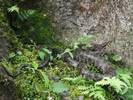
Arunachal Pradesh Herpetological Expedition 24th April to 10th May 2011
The East Himalayan state of Arunachal Pradesh is rich in reptiles, amphibian, invertebrates and a host of other wildlife species. The incredible biodiversity found in its dense and evergreen forests makes it a paradise for Herpetologists, Entomologists and Naturalists. From the lush lowland evergreen forests of Pakke Tiger Reserve to the grasslands and riverine woodland of the Brahmaputra valley, its sub-tropical and temperate forests and the stunning views of snow above the alpine meadows of Sela ridge, makes Arunachal Pradesh a truly spectacular place, where its incredible range of species is complemented by its array of breathtaking landscapes.
Arunachal Pradesh, Indiaís Northeastern-most state is like a different world. We leave the plains in Assam and as soon as we cross the border, enter a mountainous realm with steep slopes and increasingly lofty peaks. The people, culture, terrain and wildlife are all unique and fascinating.
Unfortunately, because of its remoteness, security issues and the difficulty in obtaining permits for travelers, the state has been relatively ignored when it comes to research or even eco-tourism. It hosts some very interesting fauna and flora. The red panda, binturong, clouded leopard, golden cat, takin are just a few examples. Its diversity in reptile and amphibian life is no exception. Species diversity here is quite jaw dropping with many of them only found in this small region of India.
This is precisely the reason why Rom Whitaker and Gerry Martin are heading there. He needs to conduct a survey of the venomous species there to contribute to his national snakebite survey. They will be assisted by a small team of naturalists, herpetologists and even enthusiasts. The survey will be divided between two sites in an area known as Talle Valley.
We will be targeting our survey effort on habitats and microhabitats where we feel we have the best chance of finding snakes. Our target species are mountain pitviper (Ovophis monticola), Jerdonís pitviper (Protobothrops cf. jerdoni), white-lipped pitviper (Cryptolytrops albolabris), Kaulbacks pitviper (Protobothrops cf. kaulbacki), banded krait (Bungarus fasciatus), and black krait (Bungarus niger).
If you would like to join us on this pioneering expedition then please contact Rowland on the details below:
|

